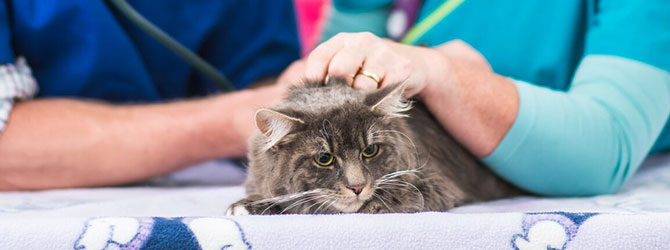Is Your Cat Having Trouble Peeing? Spotting UTI Symptoms in felines
First Published: 18/06/2018
Last Updated: 25/01/2024
Feline urinary tract disease ( otherwise known as FLUTD) is a painful condition in both male and female cats that can go on to damage the kidneys if left untreated. Feline urinary tract disease can be tricky to identify, so we look at the signs and symptoms to look out for in your cat. In fact most cats with these symptoms do not have a urinary infection but nonetheless you should see your vet to make sure your cat receives the right care.
Signs of urinary tract infections in cats
It’s not unusual for cats with urinary tract infections to display no symptoms – which makes feline urinary tract disease (FLUTD) hard to spot. You may notice your cat using the litter tray more often than usual, but only passing a small amount of urine each time.
You may spot small amounts of blood in your cat’s urine, or find that they stop using the litter tray altogether. Cats are clever creatures, and once they begin to associate the litter tray with pain, they’ll understandably be reluctant to use it. It’s quite possible that this will be the first sign of FLUTD in your cat.
If you notice any of these changes in your cat’s behaviour, get them to your local vet for a full check-up.
Occasionally, crystals or stones plug the cat’s urethra and they can’t wee at all – this problem is most common in young adult male cats who, understandably, can become agitated and uncomfortable as a result. If this occurs, seek veterinary advice immediately for emergency help.
“Once your cat begins to associate the litter tray with pain, they’ll understandably be reluctant to use it.”
Signs and symptoms of FLUTD in cats
- Unusually frequent attempts to wee, that produce small amounts of urine
- Blood in the urine
- Difficulty urinating (dysuria)
- Weeing outside the litter tray
- Cloudy urine
- Fever
- Lethargy or listlessness
A vet's view
The receptionist had just spoken to an owner who thought her cat may be constipated as it was in and out of the litter box. The clinic was fully booked today so the receptionist had booked them an appointment tomorrow, but had come to check with me. There are some scenarios in veterinary practice which always ring alarm bells in my mind, and one of them is hearing that a cat is struggling to toilet. I asked her to call back and check – has the cat been urinating normally? A cat who is constipated could have an appointment tomorrow, but a cat who has a urinary blockage needs seeing urgently.
Further details revealed that this was a male cat, who hadn’t passed any urine today and was constantly in and out of the litter box, vocalising and appearing distressed. We asked the owner to bring the cat in immediately. As suspected, the cat’s bladder was huge, firm and painful and applying gentle pressure produced no urine. This was an emergency situation, as blocked cats can become very sick very quickly. A basic blood profile revealed the cat’s electrolytes and organ function was still thankfully normal, so he was anaesthetised and a urinary catheter placed to allow the bladder to drain. Samples of the urine were sent away for analysis to find an underlying cause and the cat remained hospitalised for a few days whilst the bladder inflammation and spasm was relieved and he was able to urinate unassisted.
Cats at increased risk of FLUTD
As with any infection, elderly cats and those with a weakened immune system are most at risk of developing a urinary tract disease. Both stress and long-term steroid use can weaken the immune system, increasing a cat’s chances of developing FLUTD. Indoor cats are at particular risk but there are things you can try to reduce this.
Need help or advice on cat urinary tract disease or infections?
For expert advice, diagnosis and treatment of FLUTD in cats, contact your local vet.
Find your nearest vet using our Find a Vet page, or speak to a vet online using Online Vets.
